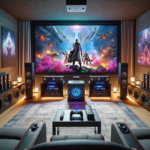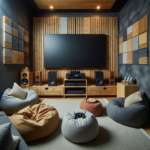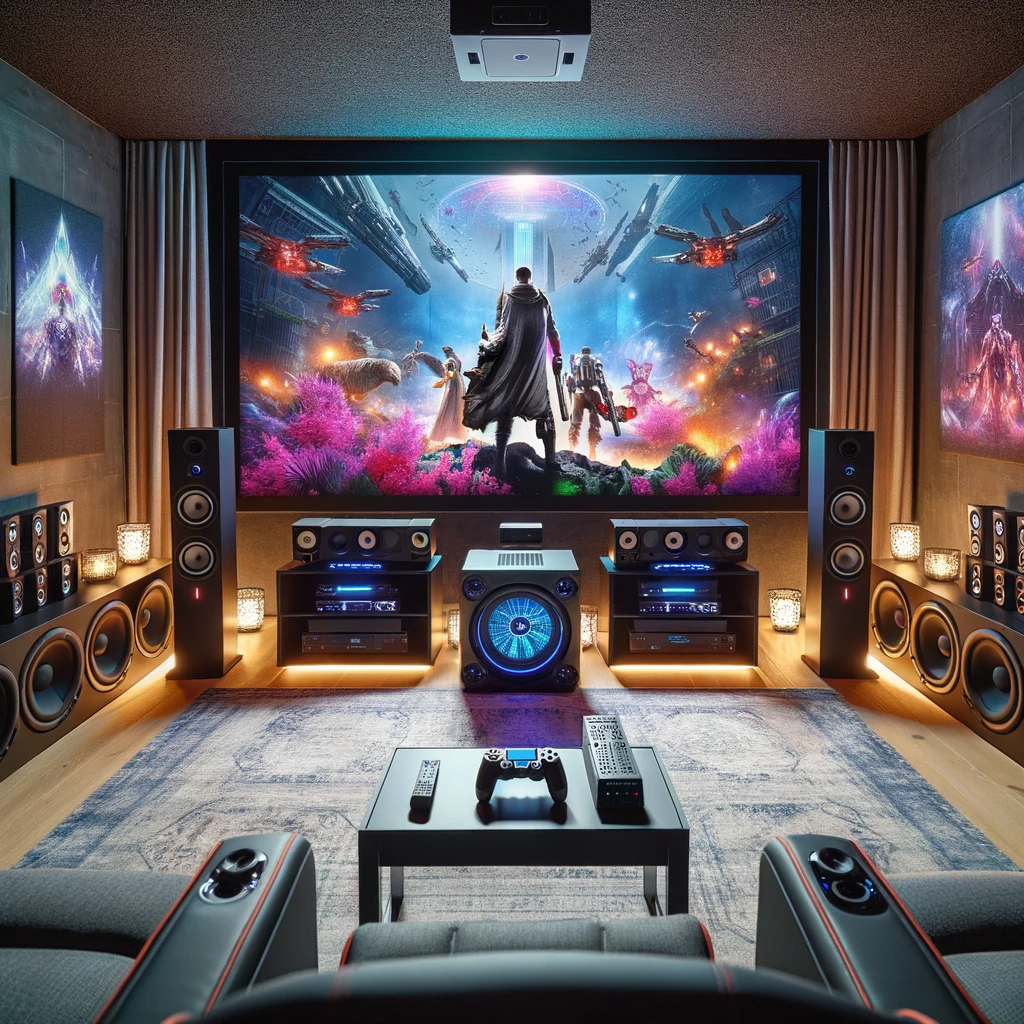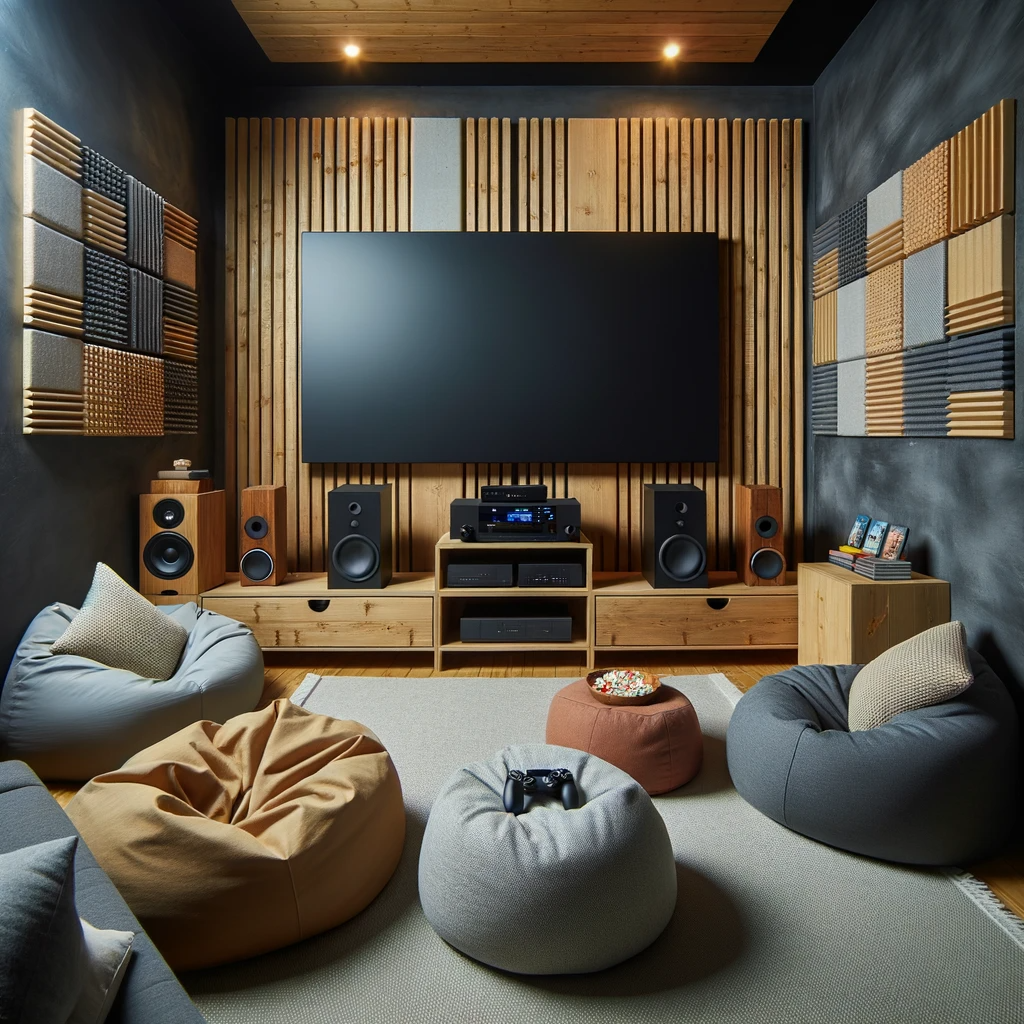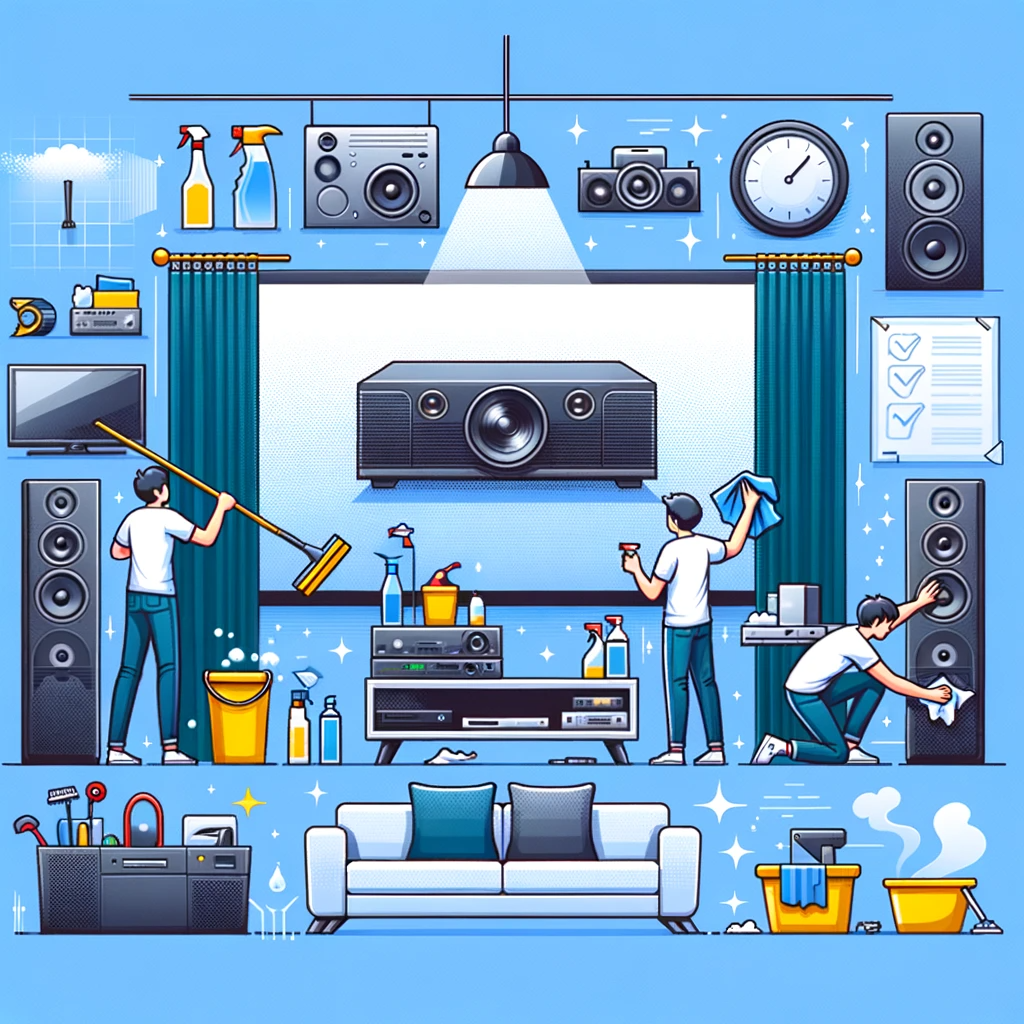Introduction to Audio Components for Your Home Theater
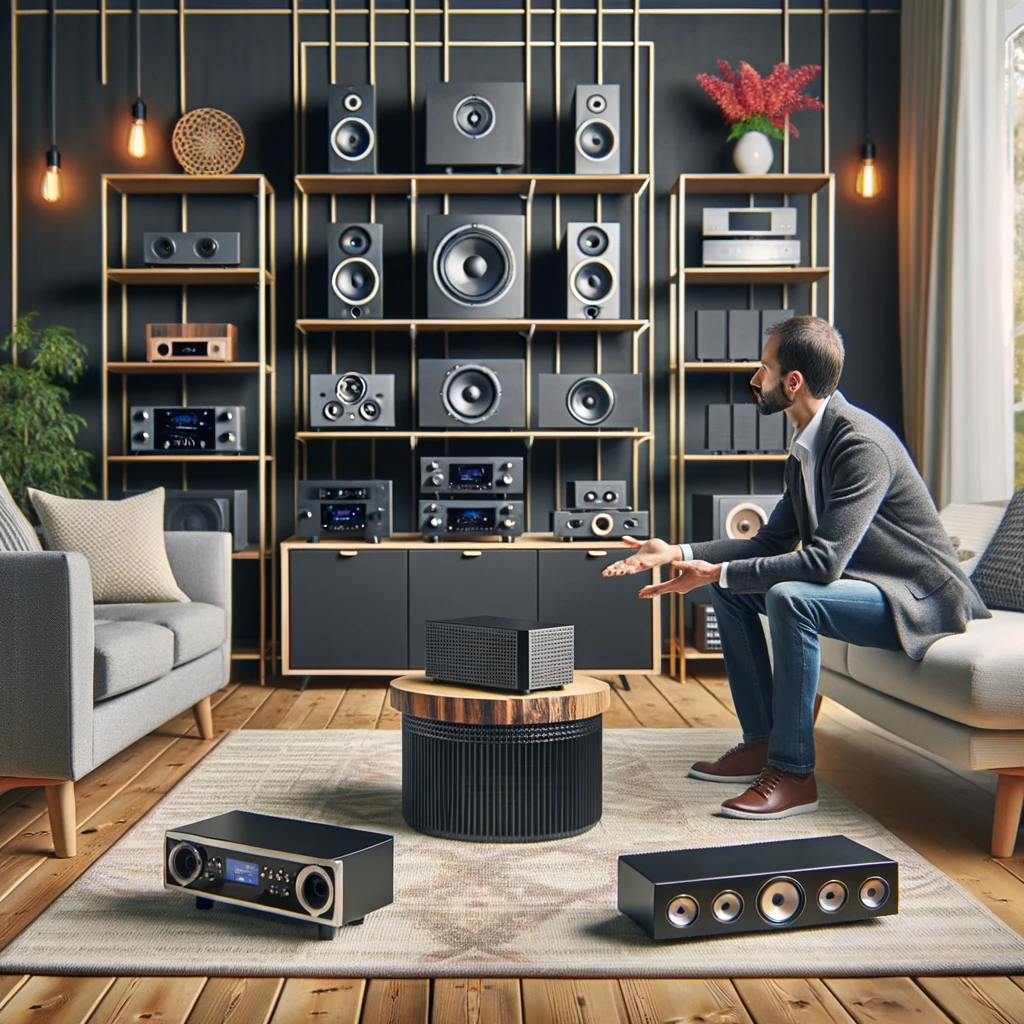
Enhancing the Cinematic Experience with Audio
Audio plays a crucial role in creating an immersive and captivating cinematic experience in your home theater. The quality of sound greatly impacts how you perceive and engage with movies, TV shows, and games. It adds depth, realism, and emotional impact to the visuals, making you feel like you’re part of the action.
Overview of Different Audio Components and Their Roles
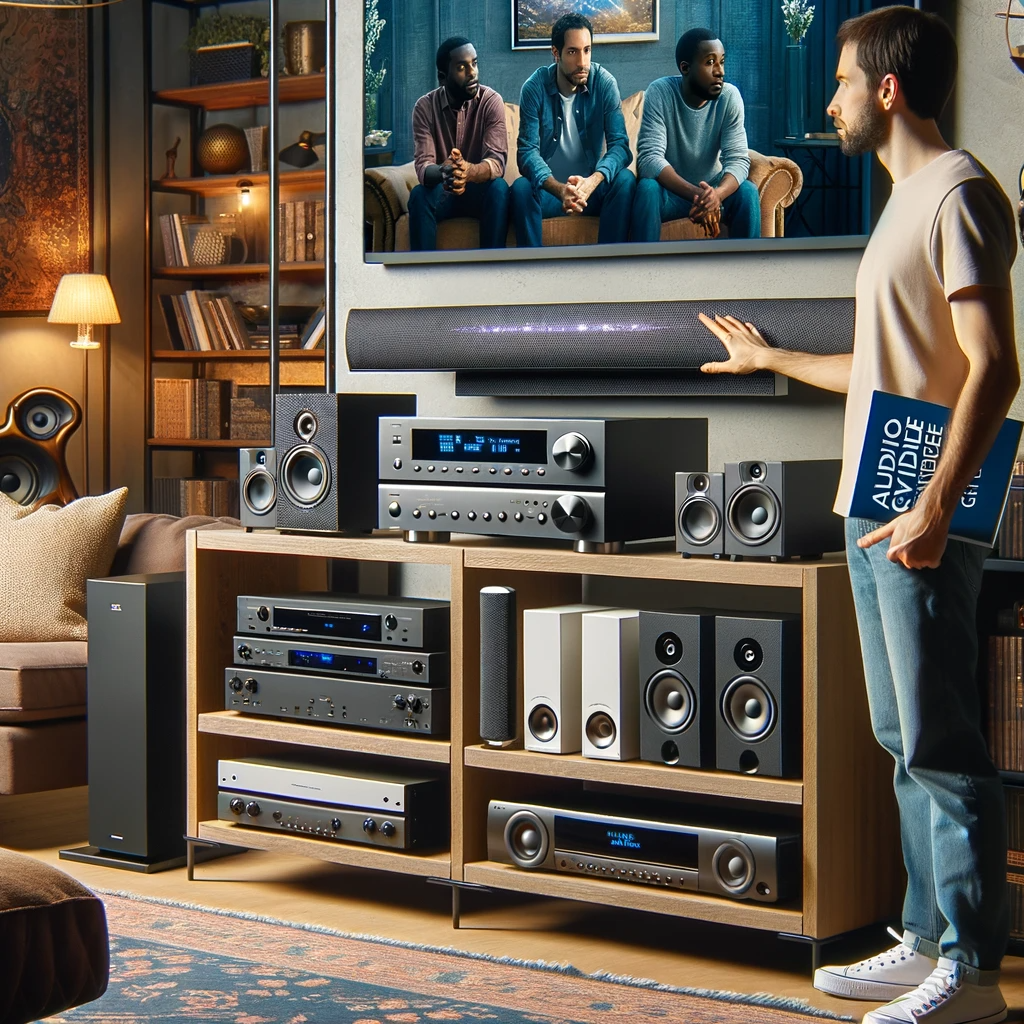
Various audio components work together harmoniously to produce high-quality sound in your home theater setup. Each component has a specific role that contributes to the overall audio experience.
Understanding these components will help you make informed decisions when building or upgrading your home theater system.
1. Speakers: Speakers are responsible for reproducing sound and delivering it to your ears.
They come in different types, such as bookshelf speakers, floor-standing speakers, in-wall speakers, and in-ceiling speakers.
2. Subwoofers: Subwoofers focus on low-frequency sounds like deep bass or rumbling effects that add impact and realism to explosions or music.
3. A/V Receiver: The A/V receiver acts as the central hub of your audio system by decoding audio signals from various sources (like Blu-ray players) and amplifying them before sending them to the speakers.
4. Surround Sound Systems: Surround sound systems create an enveloping audio experience by using multiple speakers placed strategically around the room.
5. Soundbar: A soundbar is a compact speaker system that offers an alternative solution for those seeking improved audio without dealing with multiple speakers. Understanding these key audio components will empower you to make informed decisions when selecting equipment for your home theater setup – ensuring exceptional sound quality and an immersive cinematic experience.
Understanding Speaker Systems
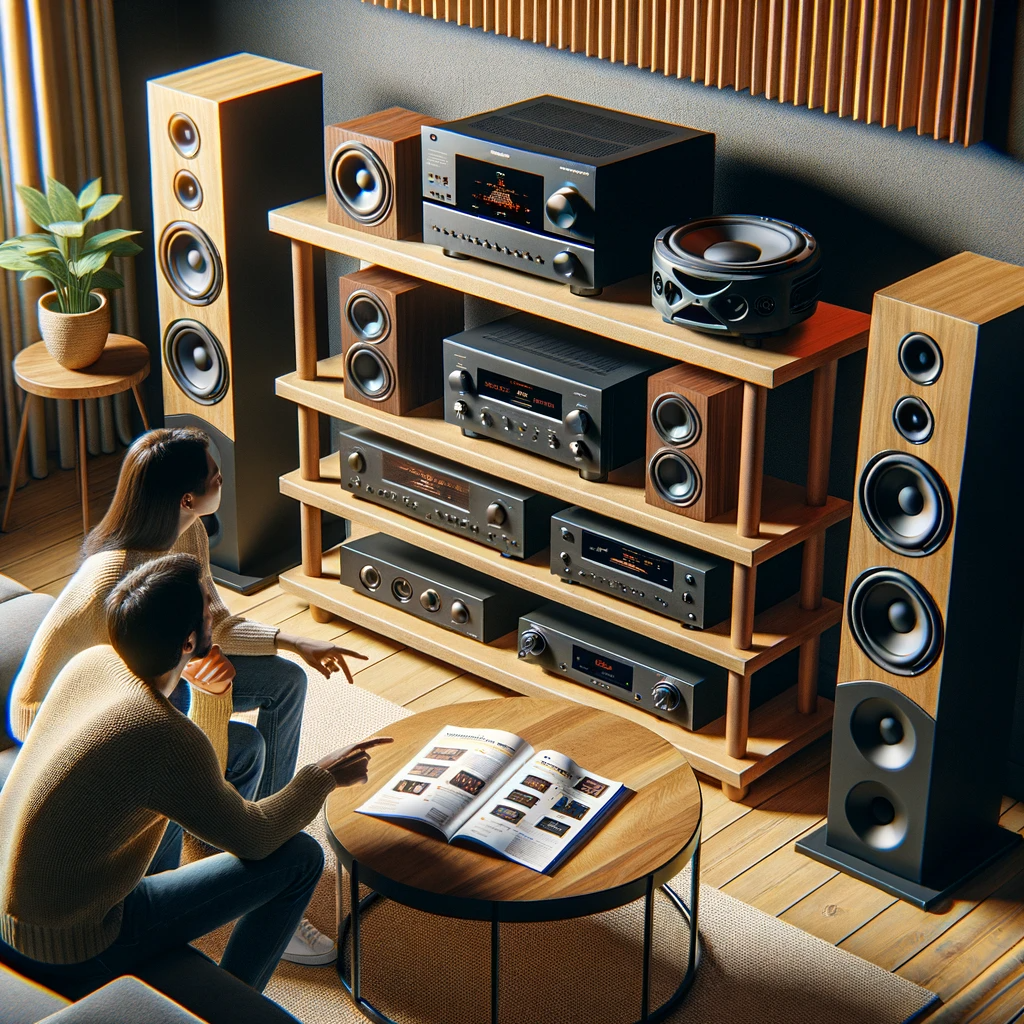
Types of speaker systems:
- Bookshelf speakers provide excellent sound quality and are compact in size, making them suitable for smaller rooms or as rear speakers in a surround sound setup.
- Floor-standing speakers, also known as tower speakers, offer powerful and full-range sound reproduction. They are ideal for larger rooms or as main front speakers in a home theater system.
- In-wall speakers blend seamlessly into the wall, providing a clean and space-saving audio solution. They are commonly used for surround sound channels or distributed audio systems.
- In-ceiling speakers are mounted flush with the ceiling, delivering an immersive audio experience. They are popular choices for overhead effects in a Dolby Atmos setup.
Speaker drivers:
- Tweeters handle high-frequency sounds, producing crisp and detailed audio.
- Mid-range drivers reproduce middle-range frequencies with clarity and accuracy.
- Woofers deliver low-frequency sounds such as bass notes, adding depth to the overall sound reproduction.
- Subwoofers specialize in reproducing extremely low-frequency sounds to create deep and powerful bass effects.
Impedance and power handling considerations:
- Impedance refers to the electrical resistance of a speaker. It is important to match the impedance rating of your speakers with that of your amplifier or receiver to ensure proper power transfer and prevent damage to your equipment.
- Power handling indicates how much power (in watts) a speaker can handle without distortion or damage. It is crucial to choose speakers that can handle the output power of your amplifier or receiver.
Surround sound setups:
- A 2.1 setup consists of two main stereo speakers (left and right) paired with a separate subwoofer for enhanced low-frequency output. –
- A 5.1 setup adds three additional surround sound speakers (left surround, right surround, and center channel) to the 2.1 configuration, creating a more immersive listening experience.
- A 7.1 setup expands on the 5.1 system by adding two additional surround sound speakers (rear left and rear right), resulting in a more encompassing surround sound field.
- Beyond these configurations, you can further enhance your home theater setup with additional speakers for a more advanced audio experience, such as Dolby Atmos-enabled systems that incorporate overhead or elevation speakers for three-dimensional sound effects.
Decoding Surround Sound Formats
Dolby Digital: the industry standard for surround sound encoding
Dolby Digital is the widely adopted industry standard for encoding audio in surround sound format. It revolutionized the home theater experience by enabling a more immersive audio environment. With Dolby Digital, sound engineers can create multi-channel audio tracks that deliver realistic and dynamic sound effects, enhancing the cinematic experience.
Exploring different Dolby Digital variants (Dolby Digital Plus, Dolby TrueHD)
Dolby offers various variants of Dolby Digital to cater to different needs and technological advancements. Dolby Digital Plus is an enhanced version that supports higher bitrates and provides improved audio quality compared to standard Dolby Digital. It delivers richer and more detailed sound, making it ideal for high-definition content like Blu-ray discs.
On the other hand, Dolby TrueHD offers lossless audio compression, preserving every detail of the original recording without any loss in quality. This format is often found in high-end home theater systems or premium media formats.
Understanding channel configurations (5-channel vs 7-channel)
Channel configurations play a crucial role in surround sound setups as they determine how many speakers are used to recreate an immersive audio experience. A 5-channel configuration consists of front left, center, front right speakers along with rear left and rear right speakers.
It creates a three-dimensional soundscape with distinct positional cues around the listener’s area. In contrast, a 7-channel configuration adds two additional side speakers to provide even more precise localization of sound objects within a room.
DTS (Digital Theater Systems): an alternative to Dolby Digital
DTS is another popular digital surround sound format that competes with Dolby Digital for delivering high-quality audio experiences in home theaters. DTS offers its own range of audio formats that provide immersive sound with different levels of quality. It is widely considered as a strong alternative to Dolby Digital, offering unique features and capabilities.
Comparing DTS formats (DTS-HD Master Audio, DTS:X) with Dolby counterparts
DTS-HD Master Audio is the lossless audio codec developed by DTS, allowing bit-for-bit reproduction of the original studio masters. This format provides high-resolution audio that retains the full fidelity of the content. DTS:X, on the other hand, is an object-based audio technology that enables sound engineers to position and move individual sound objects within a three-dimensional space.
This dynamic audio placement adds another layer of realism and immersion to movie soundtracks or gaming experiences. When comparing these DTS formats with their Dolby counterparts (i.e., Dolby TrueHD and Dolby Atmos), it becomes evident that both companies offer distinct approaches to surround sound technology, providing users with options based on their preferences and system capabilities.
AV Receivers: The Heart of Your Home Theater System
Functions and features of AV receivers
AV receivers serve as the central hub for your home theater system, connecting and coordinating all audio and video components. They act as a control center, enabling you to switch between different sources, adjust volume levels, and fine-tune audio settings. AV receivers also provide various input and output ports for connecting devices like Blu-ray players, game consoles, streaming devices, and speakers.
Amplification capabilities
AV receivers are equipped with built-in amplifiers that power your speakers. They receive low-level audio signals from different sources (e.g., movies or music) and amplify them to a level suitable for playback through the connected speakers. The power output of an AV receiver’s amplifier is typically measured in watts per channel (WPC), indicating how much power it can deliver to each speaker.
Audio/video switching and processing
AV receivers offer multiple HDMI inputs for connecting various video sources like gaming consoles, Blu-ray players, or cable/satellite boxes. These inputs allow you to switch between different video sources easily using the receiver as a central switching unit. Additionally, AV receivers often include advanced video processing technologies that enhance image quality by upscaling lower resolution content to higher resolutions or improving color accuracy.
Room calibration technologies (e.g., Audyssey MultEQ XT32)
To optimize audio performance in your room, many AV receivers employ room calibration technologies such as Audyssey MultEQ XT32. These systems use specialized microphones to measure the acoustic properties of your room and adjust speaker settings accordingly. They analyze factors like speaker placement, room dimensions, and sound reflections to create a more balanced listening experience tailored to your specific environment.
Network connectivity options for streaming services
Modern AV receivers offer network connectivity options, such as Wi-Fi or Ethernet, allowing you to access streaming services directly from the receiver. This enables you to stream music, podcasts, and internet radio stations without the need for additional devices. Some receivers even support popular streaming platforms like Spotify, Apple Music, or Tidal, giving you a wide range of audio content at your fingertips.
Choosing the right AV receiver based on your needs
When selecting an AV receiver for your home theater system, consider factors such as power output, channel configuration (e.g., 5.1 or 7.2), supported audio and video formats (e.g., Dolby Atmos or 4K HDR), and the number of inputs/outputs you require. It’s essential to assess compatibility with your existing equipment and future expansion options. Taking into account your room size and acoustic characteristics will help determine the appropriate amplifier power and room calibration features needed for optimal audio performance in your specific environment.
Exploring Soundbars as an Alternative Solution
Advantages and limitations of soundbars compared to traditional speaker systems
Soundbars offer several advantages over traditional speaker systems. Firstly, they are compact and space-saving, making them ideal for smaller rooms where setting up multiple speakers may not be practical. Secondly, soundbars are easy to install and require minimal wiring, making them hassle-free for users who want a simple setup.
Additionally, soundbars often come with built-in amplification and multiple drivers that can provide a virtual surround sound experience without the need for additional speakers. However, it’s important to note that soundbars have certain limitations.
Due to their slim design, they may not produce the same level of audio depth or imaging as larger speaker systems. Furthermore, some soundbars may lack low-frequency response compared to dedicated subwoofers.
Different types of soundbars available
There are various types of soundbars available in the market today, each catering to different needs and preferences. Standard or basic soundbars are an entry-level option that provides an upgrade over built-in TV speakers.
They typically consist of a single enclosure with multiple integrated drivers for enhanced audio performance. For those seeking more immersive audio experiences, there are also multi-channel or surround sound capable soundbars.
These models include additional rear speakers that can be wireless or wired to create a more expansive audio field around the listener. Another type is the smart or connected soundbar which integrates voice assistants such as Amazon Alexa or Google Assistant for seamless voice control and integration with other smart devices in your home theater setup.
Conclusion
Exploring the world of soundbars as an alternative solution offers several advantages and options for enhancing your home theater audio experience.
They provide a compact and convenient way to upgrade from basic TV speakers while offering features like virtual surround sound and wireless connectivity. Although they may have limitations in terms of audio depth and low-frequency response, soundbars offer a practical and space-saving solution for those who prioritize simplicity and aesthetics.
With advancements in technology, the range of sound bars available continues to expand, catering to different budgets and preferences. So, whether you opt for a basic sound bar or a multi-channel setup, investing in the right sound bar can greatly enhance your overall home theater enjoyment.

